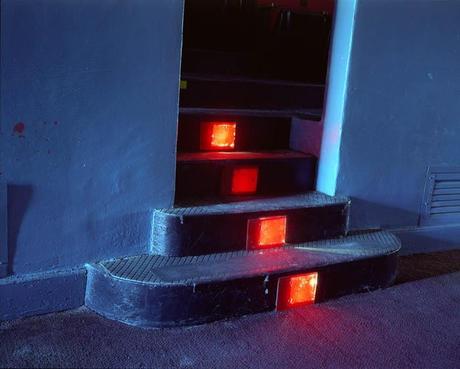
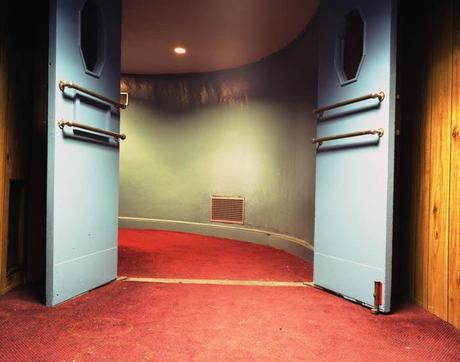
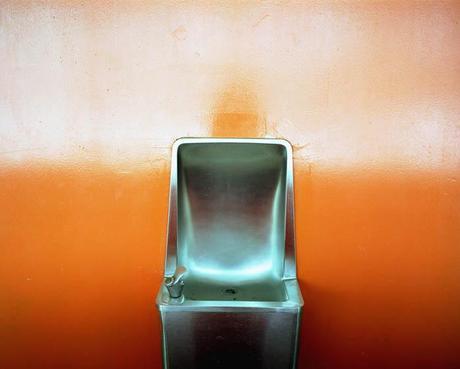
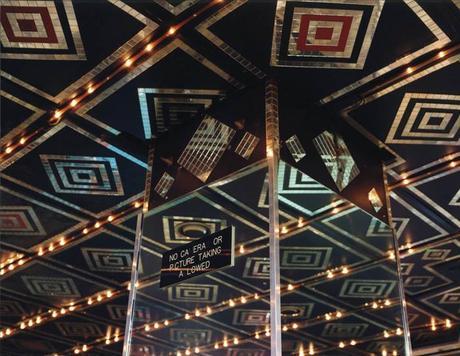
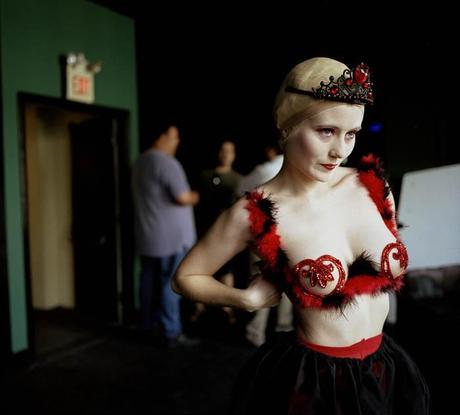
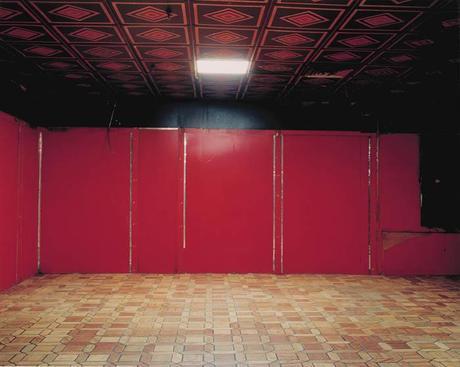
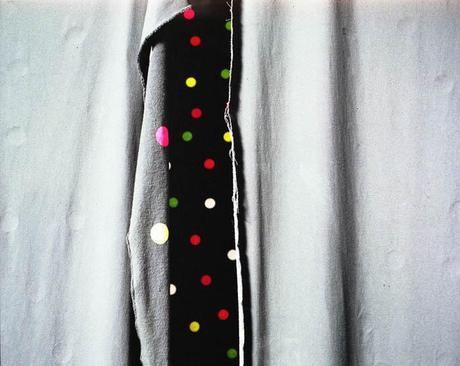
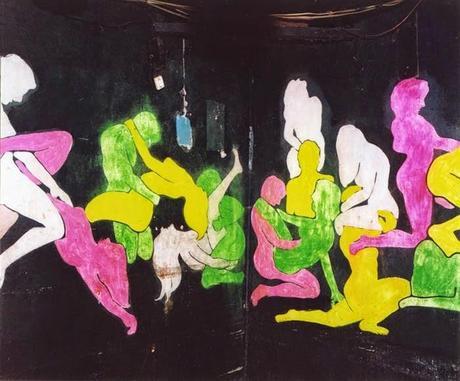
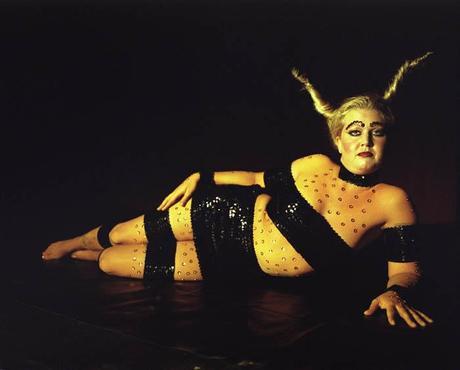
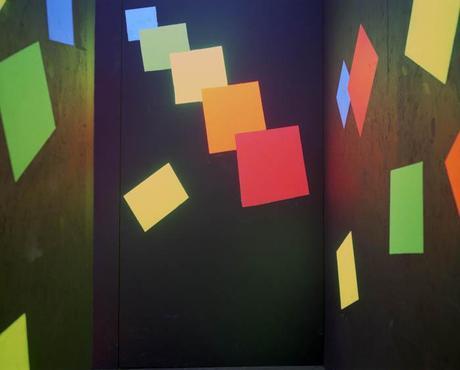
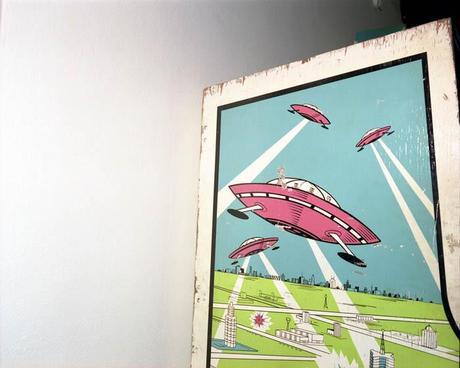
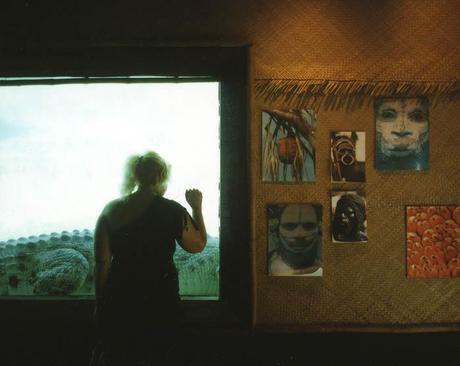

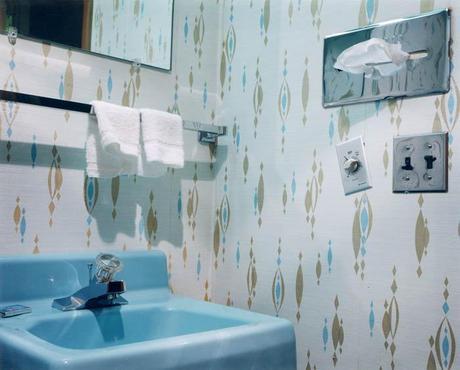
Images by Lisa Kereszi
"A gut reaction, and an interest in escapism, and what makes us have the willingness to accept such chintzy surroundings as containers for our fantasies." - Lisa Kereszi
Lisa Kereszi's photographs give us unmitigated access into the often private and unattainable worlds which perforate our imagination and curiosity. From strip clubs to abandoned military bases Kereszi has shown us places which often seem alien or intimidating but posses a charismatic connection to the viewer.
What motivated you to become a photographer?
I like to joke that it is because I couldn’t draw! It was always an interest of mine, and I took photos as a child – staged photos of my Barbies and pictures of the beach, and as a teenager – mostly a catalog of photos of all of my friends. At 16, my room was completely collaged with images from magazines and posters and photos, so I was naturally drawn to surround myself with images.
What is it that draws you to the locations you photograph?
A gut reaction, and an interest in escapism, and what makes us have the willingness to accept such chintzy surroundings as containers for our fantasies.
After finishing college you worked as an assistant to Nan Goldin. How did you meet and what lessons did you learn from her?
I reached out to her immediately after graduating from college, as I did other photographers, like Cindy Sherman and David Levinthal. The timing was right, and Nan needed a new intern as she embarked on her Whitney retrospective. Plus, a co-worker knew her studio manager, so that helped get my foot in the door. At my interview with her main assistant, Nan walked in after her shoot for the NY Times Magazine in which she and Annie Liebovitz photographed one another, and took one look at me and handed me her film from the shoot, and said, “You’re hired, here’s your first job, go drop off this film.” I have no idea if I really would have been hired by my interviewer, but I guess that was that.
I worked for her for about 1.5 years, and learned so much about how an artist lives her life, and met so many interesting people, from her photographic subjects (David Armstrong, Sharon, Ric, Pawel…) to idols of mine, like John Waters, to art world movers and shakers, like Matthew Marks and curator Elisabeth Sussman. I got to see what daily life might be like for an internationally-known, successful, famous artist, for what it’s worth. It was a real privilege to be allowed into that world and to see how she worked, edited and lived.
Does music inspire your work in any way? Name three of your favorite bands/ musicians.
Goldin’s work certainly had a strong musical component. A photograph, though, is essentially silent. But I think there are lots of ways that a musical artist’s poetic work, album design and life trajectory can influence and inspire. I love the way David Bowie reinvented himself as a different character and was a performance artist. Bruce Springsteen is the true American storyteller, from were I stand, and I connect with some of the darkness in the work of Joy Division.What's the best piece of advice you've ever been given?
Probably something a college lit professor told me at a review – that my written poetry made it clear to him that I “did not have the love of language necessary to become a poet.” It was really painful to hear, but may or may not have been true, but he sent me flying into the arms of the photography department, where I would learn visual poetics, and the rest is history.
What memorable responses have you had to your work?
I recall my grandmother’s cousin, a professor in NYC, seeing my images of empty recreational spaces at an open studios event, pausing, and turning to me and saying, “Isn’t it the most depressing thing – trying to have fun?” I also recall fondly, in a weird way, the NY Times review of my Governors Island work, in which the writer, Sarah Boxer, said, “Ms. Kereszi has an eye for the kind of detail that makes you feel like slitting your throat,” upon seeing a picture of a telephone with a label that read, “Do not discuss classified information. This telephone is subject to monitoring at all times.” This was from 2004, but is even more relevant today with phone call monitoring by the government. That comment was sort of a backhanded compliment, much like something my teacher, Tod Papageorge, said to me in my very first critique in graduate school, back in 1998. Of a photo of a woman and her dog, both wearing bunny ears, “Did you even take that picture?” The photo was perhaps so good, and also looked like it was taken in another time, that he couldn’t believe I had just made it that summer.
